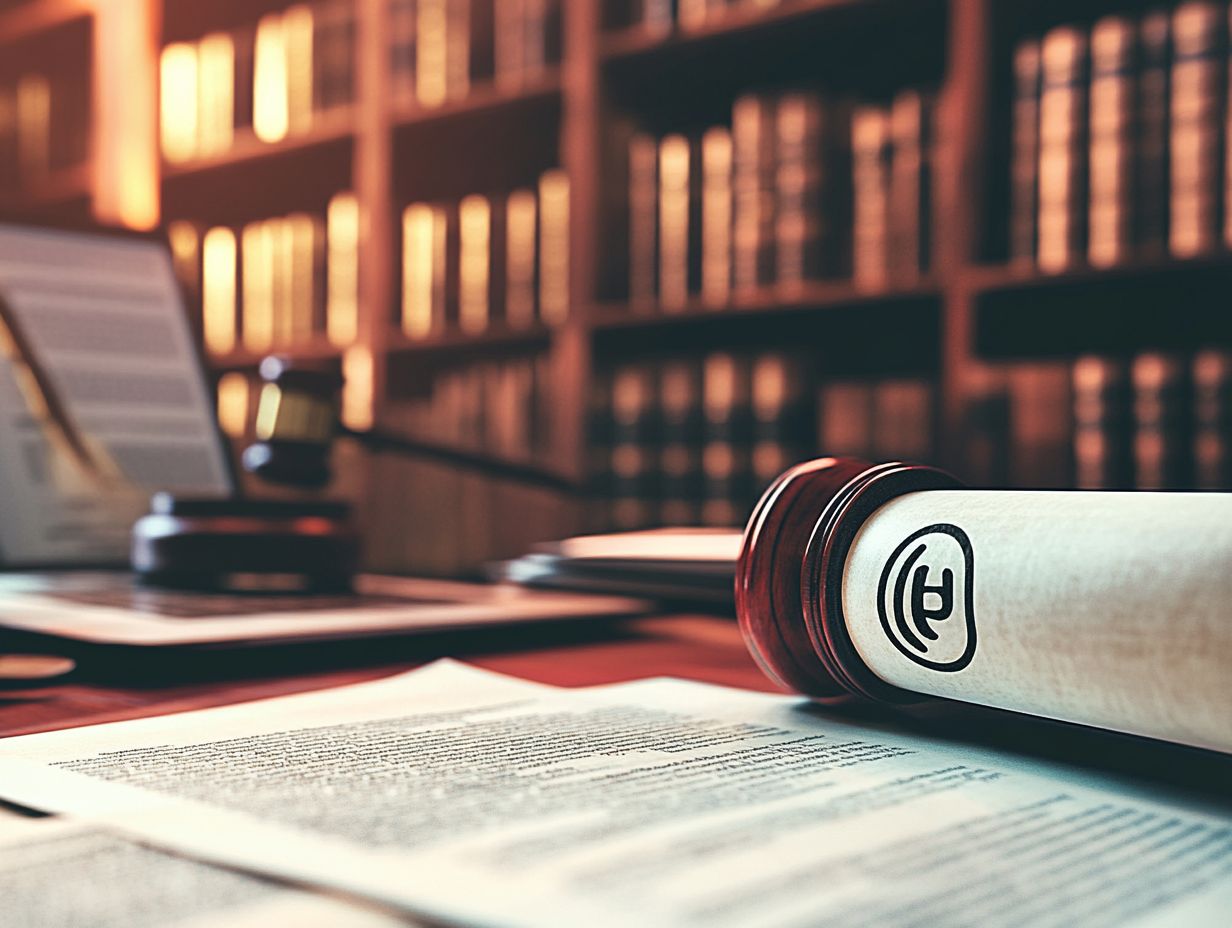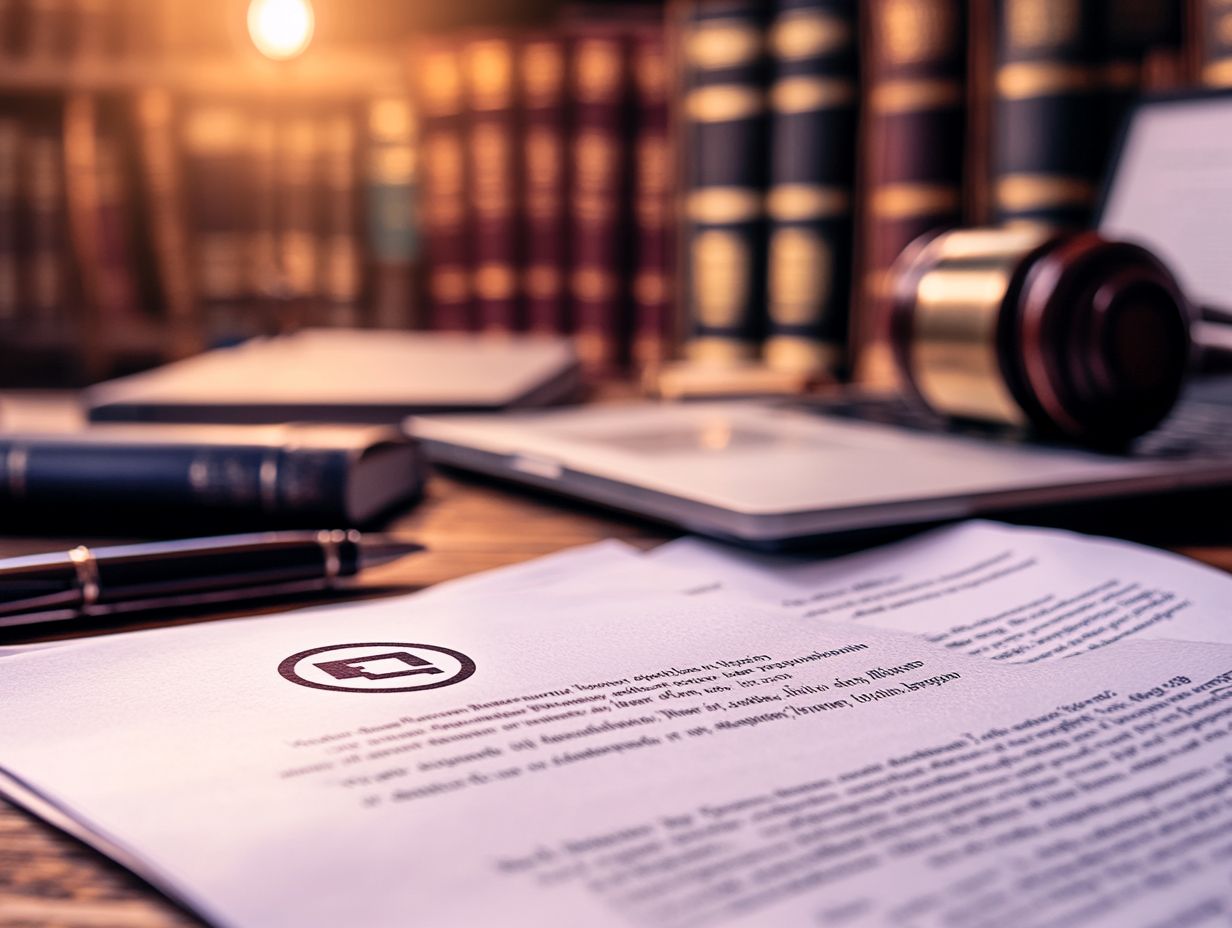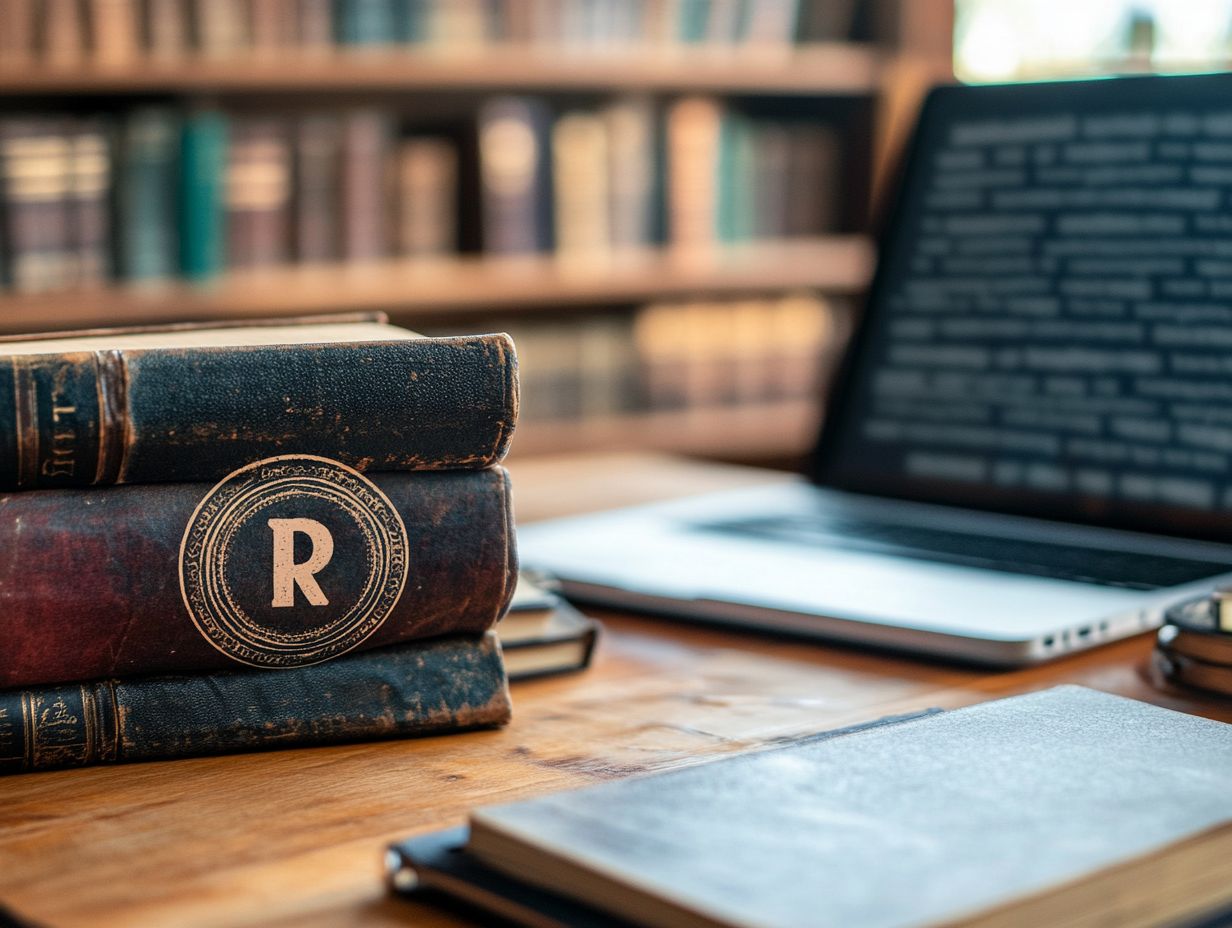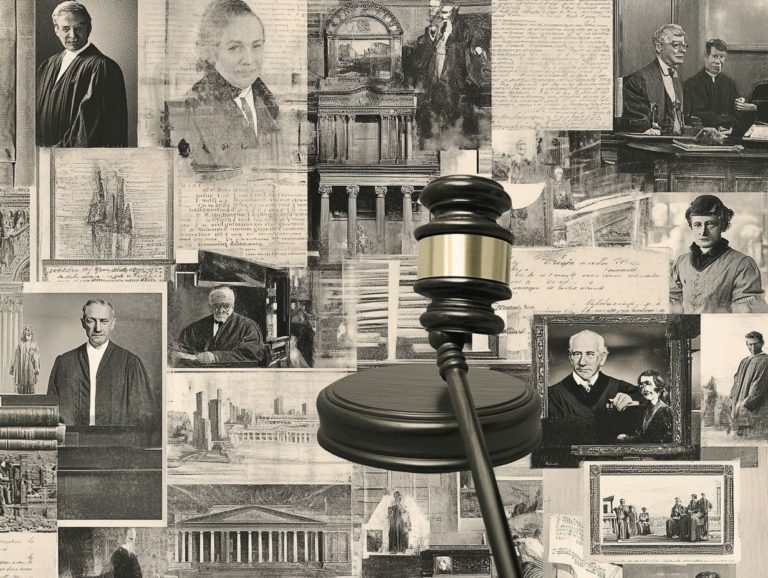What is a Copyright Notice and Why Does It Matter?
Copyright stands as a fundamental legal principle, safeguarding the creative works of individuals and organizations alike, ensuring that their rights are honored and maintained.
This guide will delve into the essentials of copyright, explaining what a copyright notice entails and why it holds such importance. You will explore the key elements of an effective copyright notice, learn the step-by-step process of creating one, and clarify common misconceptions that often lead to confusion.
By the conclusion, you will gain a deeper understanding of how copyright functions and why it is indispensable in today’s digital landscape.
Contents
Key Takeaways:

- A copyright notice is a statement that informs others of your legal ownership and rights to your original work.
- Including a copyright notice on your work can serve as a deterrent for those who may try to use it without permission, and also provides legal protection in case of infringement.
- Creating a copyright notice is simple and can be done by following a step-by-step guide. It is important to understand the misconceptions surrounding copyright notices.
Understanding Copyright
Knowing copyright is essential for protecting your creations and securing your rights as a creator, artist, or business owner.
Copyright law gives you exclusive rights, allowing you to dictate how your artistic creations and their new versions or adaptations are utilized. This framework protects your work and lets you enforce your rights against unauthorized use and potential infringements.
Understanding copyright helps you navigate the complex processes of copyright registration, documentation, and maintenance. Knowing these rules is crucial, especially in places like the U.S., U.K., and EU, where laws can differ.
What is a Copyright Notice?
A copyright notice is an essential statement that conveys vital legal information regarding the copyright status of a specific work. It includes the copyright symbol, the year of first publication, and the name of the copyright owner.
This notice plays a critical role in ensuring copyright compliance, clearly outlining the exclusive rights held by the copyright owner while discouraging unauthorized use. You’ll often find it on a wide range of original works, from artistic creations to written content and even AI-generated pieces.
By placing this notice, you assert your copyright ownership and firmly establish your copyright claims.
Explanation and Importance
The copyright notice is an essential tool for copyright compliance, serving to inform the public of the legal rights you hold as the copyright owner while actively discouraging any infringement.
This straightforward yet impactful statement defines your ownership and outlines the boundaries of acceptable use.
In legal disputes related to copyright infringement, having a copyright notice can significantly bolster your position, clearly demonstrating your intention to protect your intellectual property.
As per the U.S. Copyright Act, your right to enforce your work hinges on such notices, making them a vital element in safeguarding your creative expression.
By effectively alerting potential infringers of your existing rights, you shift the responsibility onto those who might otherwise exploit your original works without proper consideration or permission.
Components of a Copyright Notice

A copyright notice typically encompasses three essential components: the copyright symbol, the name of the copyright owner, and the year of first publication.
Together, these elements provide vital information about both the duration of the copyright and the rights of ownership.
What to Include and How to Format
When crafting a copyright notice, include the copyright symbol, your name as the copyright owner, and the year of first publication. Make sure it s formatted clearly so it is easily visible and carries legal weight.
This notice serves as a legal claim to your ownership and informs the public of your rights as a creator. Position the copyright notice prominently on your work whether at the bottom of a printed page, within the opening credits of a film, or in the footer of a website.
For digital content, consider embedding the notice within the metadata, which is information embedded in digital files, to bolster its protection. Following these best practices reinforces your compliance with copyright laws and helps users understand the usage parameters, safeguarding your intellectual property from potential infringement.
Why Copyright Notices Matter
Copyright notices hold considerable importance as they grant legal protection for original works.
These notices effectively deter infringement and bolster the copyright owner’s ability to enforce their claims.
Understanding this will empower you to protect your creativity in a world where originality deserves recognition.
Legal Protection and Deterrent for Infringement
Copyright law provides a robust framework for legal protection. Copyright notices clarify the status of original works to the public, serving as a powerful deterrent against infringement.
This principle is evident in various case studies, such as the landmark case of Optical Disc Corporation v. United States, where the court underscored the significance of these notices in reaffirming the rights of the copyright holder, leading to substantial damages awarded for infringement.
In the music industry, the prominence of copyright notices often prompts swift legal action against unauthorized reproductions, showcasing their formidable deterrent effect. These notices enable creators to protect their intellectual property and provide a clear legal pathway for recourse in instances of infringement.
How to Create a Copyright Notice

Creating a copyright notice is simple yet essential. You need to include the copyright symbol, the copyright owner’s name, and the year of first publication to meet the standards for copyright registration.
Step-by-Step Guide
To create a copyright notice, begin with the copyright symbol, followed by the copyright owner’s name and the year of first publication. These elements are the foundation for legal recognition of your work.
Once you’ve included the symbol and owner details, place the notice in a visible location typically at the beginning or end of the work. This positioning ensures viewers can easily identify your copyright claim.
Including a statement about reserved rights can enhance your notice. Each component, when formatted correctly, carries significant legal implications; any inaccuracies could complicate your ability to enforce the rights tied to your work.
Therefore, pay close attention to details to protect your intellectual property.
Common Misconceptions About Copyright Notices
Misconceptions surrounding copyright notices can create confusion about copyright law, claims, and the rights of the copyright owner, especially regarding fair use principles. Understanding these nuances is essential for navigating the complexities of intellectual property effectively.
Debunking Myths and Clarifying Facts
Debunking myths about copyright law is essential for you to clearly understand the actual rights and responsibilities of copyright owners. This is especially important regarding the limited use of copyrighted material without permission, known as fair use.
You might think that simply crediting the original creator allows you to use copyrighted material without any constraints. However, fair use is nuanced and considers several factors, such as the purpose and character of your use whether it s commercial or educational and the amount of the original work you re using.
For example, quoting a brief passage from a book for your scholarly article may qualify as fair use. In contrast, using a large part of that book in a promotional video could lead to copyright violations.
Another prevalent misconception is that registering a copyright is a must for protection. Copyright protection starts automatically the moment you create a work. However, registration does offer legal advantages if infringement occurs.
By grasping these truths, you’ll tackle copyright issues with confidence and clarity!
Frequently Asked Questions

What is a Copyright Notice?
A copyright notice is a statement that informs others that a work is protected by copyright law. It indicates that the owner has exclusive rights to reproduce, distribute, and display the work. Typically, it includes the copyright symbol , the year of creation, and the name of the copyright owner.
Why Does It Matter?
A copyright notice is important because it serves as legal evidence that a work is protected by copyright law. This can help deter others from using the work without permission and allows the copyright owner to take legal action if their rights are infringed upon.
Do I Need to Include a Copyright Notice on My Work?
No, a copyright notice is not required for a work to be protected under copyright law. However, it is recommended to include one to inform others of your copyright ownership and rights.
Where Should I Place a Copyright Notice?
A copyright notice should be placed in a prominent location on the work, such as the title page of a book, the bottom of a website, or the credits of a film. This makes it easily visible and accessible to others.
Can I Use a Copyright Notice for Non-Original Works?
No, a copyright notice should only be used for original works that are eligible for copyright protection. It should not be used for works that are in the public domain or that have been licensed under a Creative Commons license.
What Happens if I Don’t Include a Copyright Notice?
If you do not include a copyright notice on your work, it may still be protected under copyright law. However, it may be more difficult to prove your ownership and rights in case of infringement. It is always best to include a copyright notice to protect your work and rights.
If you have more questions or need assistance, feel free to reach out for more information!






